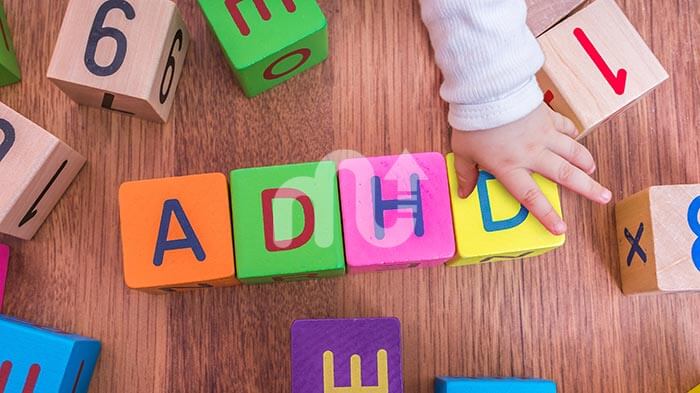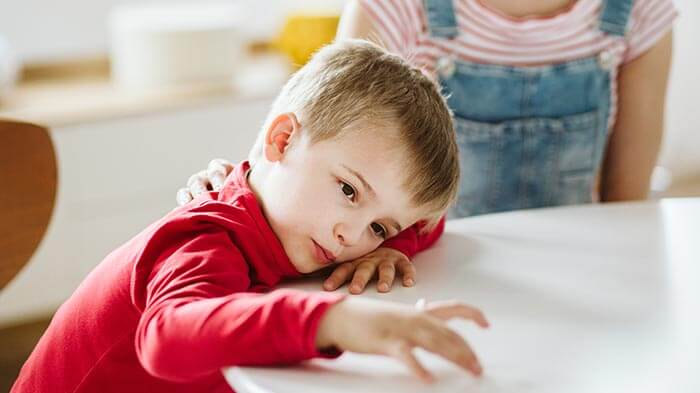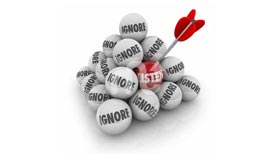What Are the Types of ADHD?
Attention deficit hyperactivity disorder (ADHD) is a chronic condition that many families fear because it is one of the most common neurodevelopmental disorders in children. Today, millions of children are experiencing the effects of ADHD and they often continue to experience the symptoms in their adulthood.
ADHD Definition: ADHD can be defined as a combination of persistent problems such as difficulty maintaining attention, hyperactivity, and impulsive behavior. If you want to deep dive before reading about its types, you can take the ADHD test and look at questions about ADHD and come back to the page.

General ADHD Symptoms:
- Problems focusing on a task
- Frequent mood swings
- Impulsiveness
- Learning disorders
- Having trouble multitasking
- Disorganization and problems prioritizing
- Poor planning
- Poor time-management skills
- Excessive activity or restlessness
- Problems following through and completing tasks
- Trouble managing stress
- Low frustration tolerance
- Hot-tempered
With MentalUP Attention Exercises, it is possible to increase your kids’ attention period with 15-minute daily fun exercises. You can start the attention exercises now with MentalUP’s scientific games designed by academicians and professional game designers. Also, don’t skip without visiting smart apps for learning difficulties and Dyslexia apps for kids that can help children with ADHD!
ADHD is not a simple problem. There are some subtypes every parent should be aware of. So, how many types of ADHD are there and how are they defined? Let’s find out!
Different Types of ADHD and Their Symptoms
There are three main ADHD subtypes. These three types of ADHD are diagnosed according to the symptoms experienced in daily life. Symptoms and the ADHD types may vary with age and time. There are different diagnostic methods and ways of treatment of different ADHD types with different symptoms.
Moreover, keep in mind that sometimes ADHD is combined with other conditions such as autism. If that is the case for you, you can have a look at the best autism apps for kids or use an online dyscalculia test to be sure. Otherwise, you can find the 3 most common types of ADHD are as follows:
1- ADHD Inattentive Type
Many children by nature show signs of Inattentive ADHD, such as a limited attention span and difficulties in following the instructions. However, children with Inattentive ADHD experience much more important challenges in life beyond focus and attention deficit.
Although impulse control or hyperactivity problems are not among the common symptoms of Inattentive ADHD, some people may also have to deal with these symptoms.

Inattentive ADHD Symptoms
In children and adults with Inattentive ADHD, the following symptoms are frequently seen:
- Procrastination
- Inattention
- Hesitation
- Forgetfulness
Diagnosing ADHD Inattentive
There is no blood test to diagnose inattentive ADHD. Psychologists and psychiatrists observe whether there are certain common personality or behavior problems to diagnose inattentive ADHD in adults or children. Below we have listed the personality and behavior problems observed commonly in people with this type of ADHD:
- regularly making careless mistakes in tasks
- being unable to complete tasks
- being easily distracted
- having trouble managing time or organizing tasks
- being unable to pay close attention
- having difficulties staying focused on tasks
- avoiding tasks that require long periods of thinking
- regularly losing items
- being absent-minded when spoken to
- forgetting to perform daily tasks
Treatment Methods of Inattentive ADHD
There is no definitive treatment to completely eliminate ADHD symptoms. On the other hand, medications and treatments can help reduce symptoms and manage behavior problems.
Treatment of ADHD is similar in most cases, regardless of expert diagnosis. A healthcare provider will usually recommend a combination of medication and education, behavioral and psychological therapies.
2- Hyperactive-Impulsive ADHD
People with this type of ADHD are characterized by impulsive behaviors and signs of hyperactivity. Even though symptoms of attention-deficit are seen, they are not as dominant as other symptoms. The symptoms generally involve high levels of energy in Hyperactive or Impulsive ADHD.

Hyperactive or Impulsive ADHD Symptoms
In children and adults with Hyperactive or Impulsive ADHD, it is often possible to see the following symptoms:
- Difficulty controlling behavior
- Having problems in paying attention
- Excessive activity
Diagnosing ADHD Hyperactive or Impulsive
As in Inattentive ADHD, there is no blood test to diagnose Hyperactive or Impulsive ADHD. Below are the personality and behavior problems that can be observed in people with this type of ADHD:
- running or climbing at inappropriate places or times
- tapping the hands or feet
- squirming while sitting
- inability to stay seated
- interrupting others
- blurting out answers
- difficulty in waiting their turn
- inabilityto participate in group activities
- talking excessively
Treatment Methods of Hyperactive or Impulsive ADHD
The main treatment components in children with ADHD include family therapy, increased parental support, behavioral education, appropriate school placement, and drug therapy.
Treatment by a psychostimulant is highly effective in most children with Hyperactive-Impulsive ADHD.
3- Predominantly Combined Subtype of ADHD
As its name suggests, kids or adults who have a Combined type of ADHD, is when a combination of Inattentive ADHD and Hyperactive or Impulsive ADHD is observed.
Combined ADHD Symptoms
The symptoms do not only include attention deficit or hyperactive-impulsive behaviors. Instead, a combination of symptoms from both Inattentive ADHD and Hyperactive or Impulsive ADHD is manifested . Thus, the main symptoms are :
- Hyperactivity
- Inattentive
- Impulsive
Diagnosing ADHD Combined
If at least six of the above-mentioned Inattentive ADHD or Hyperactive-Impulsive ADHD symptoms in a child or adult are observed for more than six months, a doctor will likely diagnose a Combined ADHD.
Treatment Methods of Combined ADHD
As with diagnostic methods and the personality and behavior problems observed in symptoms, treatment methods are also applied as a combination of the other two types of ADHD in people with Combined ADHD.
Comparing 3 Types of ADHD
| Inattentive ADHD | Hyperactive - Impulsive ADHD | Combined ADHD | |
| Age & Gender | - Among children and teens under 18 years old,
females are more likely to have the predominantly inattentive type - More common among older children, teens, and adults |
- Among children and teens under the age of 18, males are more likely to have the predominantly hyperactive-impulsive type |
- No difference in terms of age or gender |
| Symptoms | - Procrastination
- Inattention - Hesitation - Forgetfulness |
- More common among preschool-age children | - Hyperactivity
- Inattentiveness - Impulsiveness |
| Characteristics & Behaviours to Be Diagnosed |
- miss details and are distracted easily
-get bored quickly - have trouble focusing on a single task - have difficulty organizing thoughts and learning new information - lose pencils, papers, or other items needed to complete a task - don’t seem to listen - move slowly and appear as if they’re daydreaming - process information more slowly and less accurately than others - have trouble following directions |
- squirm, fidget or feel restless
- have difficulty sitting still - talk constantly - touch and play with objects, even when inappropriate for the task at hand - have trouble engaging in quiet activities - are constantly “on the go” - are impatient - act out of turn and don’t think about consequences of actions - blurt out answers and inappropriate comments |
- Combination of characteristics and behaviors from both Inattentive and Hyperactive or Impulsive ADHD |
| Treatments | - Medication
- Educational therapy - Psychological therapy |
- Medication
- Behavioral therapy - Family therapy -Appropriate school placement |
- Medication
- Family therapy - Educational therapy -Behavioral therapy - Psychological therapy |
Wrap-Up
Children with ADHD can struggle with low self-esteem, problematic relationships, and poor performance at school. This may hinder their success and achievements as they as grow up because of learning disabilities.
People with ADHD never completely overcome ADHD symptoms themselves. Thus being aware of the three most common types of ADHD, their symptoms and treatments, will help you guide your kids towards their future success. 🎓
MentalUP is a scientific brain games app designed by academicians and pedagogues. It offers 150+ ADHD-friendly attention games and 240+ fitness exercises for kids to help children strengthen their cognitive skills and bodies. 🧠💪
As ADHD is a cognitive disorder, always keep in mind that reliable brain exercises and ADHD apps for kids are highly beneficial to overcome learning disabilities.


.jpg)


